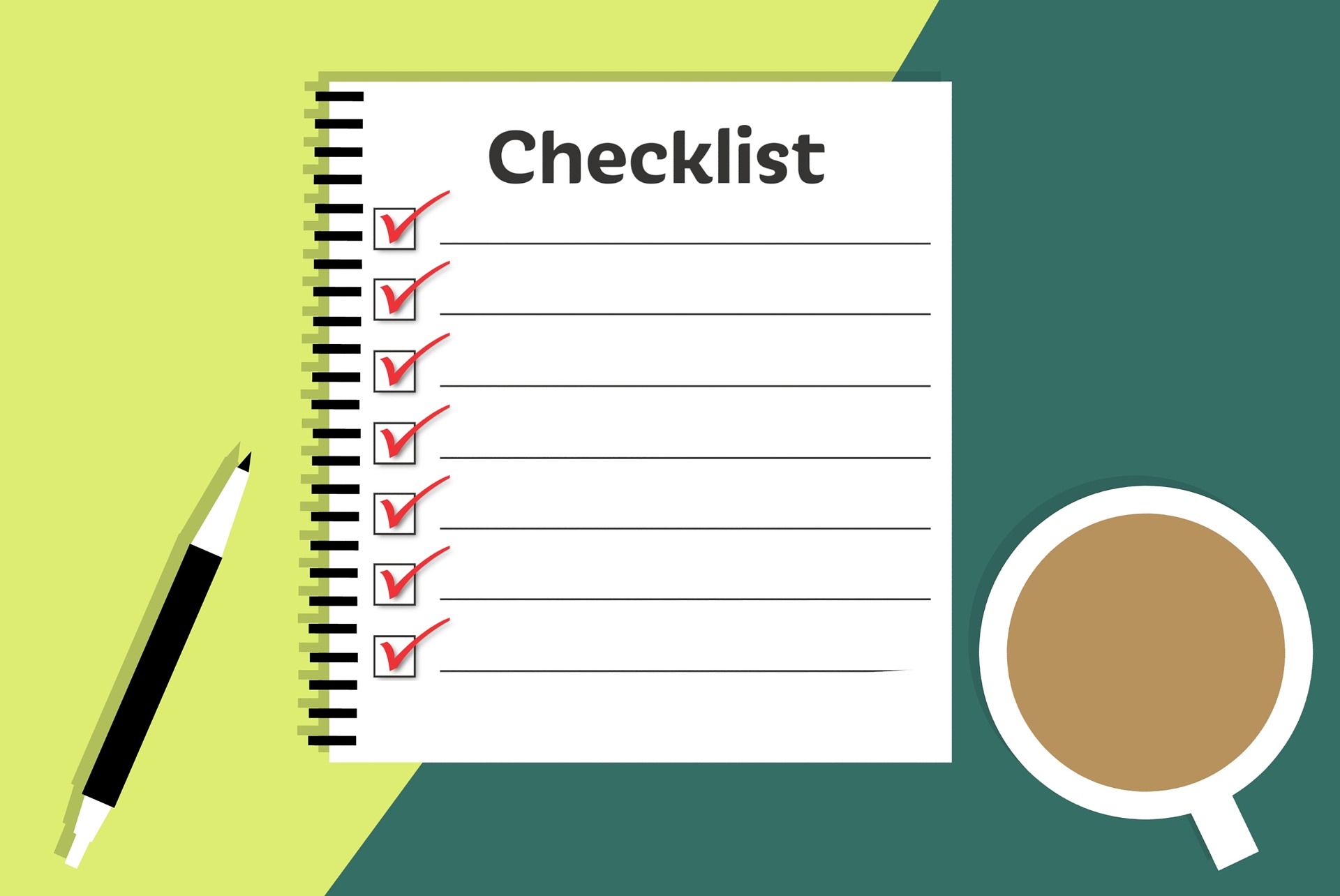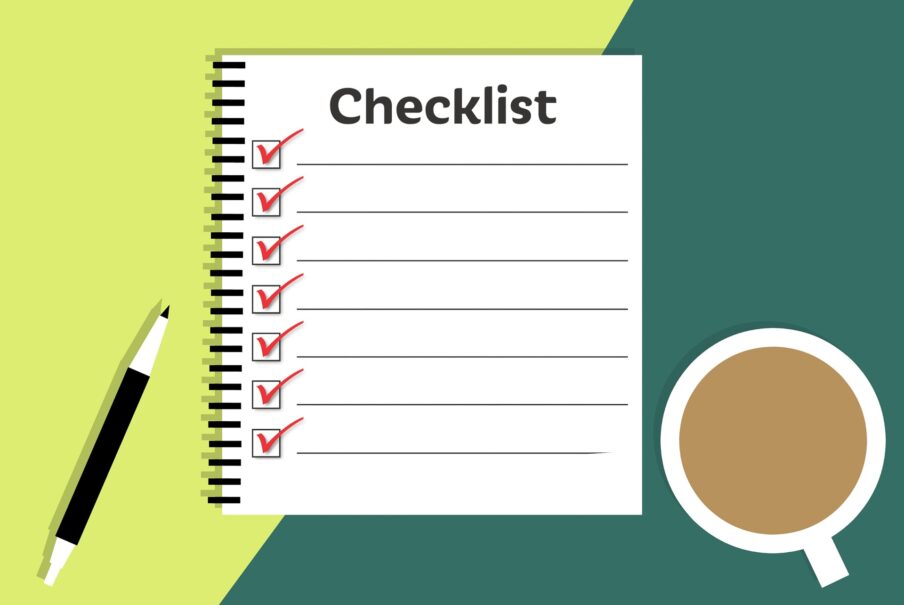By Jill Williamson, @jillwilliamson

If you’re getting ready to submit a manuscript to an editor or agent, this post is for you. I’ve talked to hundreds of authors at writing conferences over the years, and the vast majority of them are seeking traditional publication. I’ve always found it tragic when an author is offered an invitation to submit their query letter and/or sample chapters, and they send them with obvious mistakes.
Editors and agents are extremely busy. Many get hundreds of emails a day. More often than not they are looking for a reason to reject the vast number of submissions they receive. Your goal is to do everything you can to give them no reason to say no. You want to make certain you’ve done everything you can to make the best first impression.
To help you with this daunting task, I’ve created a Submission Checklist for you to use as a list of reminders to double-check before you click send on the submission of your work-in-progress. I will go over each area to explain them in depth, then at the end of the post, you can click on the link to download a PDF of the checklist.
The Hard Questions
Is your submission a good fit? Why did you pick this person to submit to? If you have a personal invitation, no need to worry. But if you are cold querying, be sure to do your homework. Study the agency’s or publisher’s website to see what kind of authors and stories they work with. Most agency websites have that information listed with the bios of their agents. You can also look up the editor or agent on Twitter to see if they’ve shared any of their interests there. Also, many writing conferences will state what their faculty is interested in seeing, so if you know some of the conferences the editor or agent is planning to attend, you can search the agent or editor’s name and words like: “conference,” “faculty,” “wishlist,” and “looking for” to see if you can find the right people to look at your book.
Do you have permission to submit? Breaking the submission guidelines is the easiest reason for an editor or agent to reject you. They will not make an exception because your story is good. Submission guidelines for content are not personal but have to do with the types of books each company works with. Sending your cozy mystery to a fantasy publisher will never get a yes—unless your lead detective is a mythical creature or living in a science fiction world.
Did you follow directions? If the agency or publisher has specific guidelines for how to submit, follow those instructions to a T. If they ask for marketing ideas and you don’t have any, spend some time coming up with some marketing ideas before you submit. But don’t send in things they haven’t asked for. And if they request you format your manuscript differently from the industry standard, obey their guidelines. Use the “Save As” feature in Word and format a copy of your submission just for them. That way you still have your original to submit elsewhere. Meeting specific submission guidelines is your chance to show you know how to follow directions.
Your Email Query and Cover Letter
Is your email formatted properly? Your query or cover letter should be formatted like a business letter. That means it should be single-spaced, left justified, with spaces between each paragraph and no indentations. The font should be 12-point Times New Roman or Courier. Using the standard font in your email program is okay, as long as you haven’t changed it to something difficult to read.
To whom are you writing? Make sure that your salutation is professional and addressed to the right person. Double check the spelling of their name. If you’re not sure what title to use, choose Mr. or Ms. And if they have a name that makes it difficult to surmise their gender, use their first and last name like: Dear Lee Johnson.
Have a personal connection? If you met this person and they invited you to submit, it’s important to say so as soon as possible. Agents and editors meet hundreds of writers. If there is any way for you to spark their memory and remind them what you talked about, do so. For example, you could say the following: “It was so nice having lunch with you at the Northwest Writers Conference in Seattle last month. It’s always fun to talk with another cat lover.” Normally, mentioning a pet wouldn’t seem fitting for a business letter, but if it will help the editor or agent put a face to a name, that personal connection can separate you from writers who have none.
Don’t forget your contact information. Since an email is not written on stationery and has no header, be sure to include your contact information in the signature line of the email. That means your full name, email address, phone number, and if you have one, the link to your website.
Copywriting your manuscript is not necessary. Authors never need to place a copyright symbol on manuscripts. The moment you start writing anything, it is automatically protected. No agent or editor is going to steal your story. If you insist on copywriting your work, refrain from saying so in your query or cover letter, and do not add copyright symbol Ⓒ on your manuscript. This is an instant sign of a novice and completely unnecessary. If you want to learn more about this topic, check out this blog post on Writer’s Digest.

Did you write a strategic subject line? The subject line in an email is extremely important. Written well, it can help ensure the email gets read faster than others. Mention what it is, for example, “Query,” or “Submission.” If the material was requested by that agent, it’s a good idea to write “Requested Material.” It’s also wise to say the genre, especially for agents or editors who represent multiple genres or age groups, for example, “YA contemporary” or “Middle Grade Fantasy.” It’s not necessary to pitch in the subject line, nor should you resort to click-bait tactics like, “Ted Dekker said to email you.” A referral, however, is different. If an editor, agent, or multi-published author referred you to this editor or agent, you can say, “Referred by Jason Famous Author.” Here are some examples to inspire you:
Query: My Life Story, a memoir
Romantic Suspense Submission: Never Been Arrested
Requested Material: Book Title Here
YA Fantasy Query: Dark Rivers—Referred by Anne Agent
Did you proofread your email and get a second set of eyes? Once your email is ready to go, proofread it, spell check it, and ask someone else to read it and offer feedback. I don’t know how many times I’ve proofread, spell checked, and still missed mistakes. It’s always helpful to have an objective reader take a look for you.
Your Manuscript
Is your manuscript formatted properly? There is a right way to format a manuscript for submission. I once created a YouTube video for an online writers’ conference on this topic, and it has gone somewhat viral. If you’re wanting to learn more about manuscript format, click here to check out that video. You don’t have to go to that level of formatting, though. The basics will suffice. That means, format your manuscript to have Times New Roman or Courier, 12-point font. Make sure that it is double spaced with 1-inch margins on all four sides. There should be no extra spacing before or after paragraphs. The right margins should be unjustified. And there should be no copyright symbols on your manuscript.
Is your punctuation correct? Proper punctuation is important for writers seeking publication. If you’re not sure of the correct punctuation for fiction, check out the Punctuation 101 posts I wrote on the Go Teen Writers blog. I also included those posts along with more information in my book Punctuation 101, which I wrote strictly for writers of fiction. The best resource, of course, is the Chicago Manual of Style, which is the industry standard for writing fiction. Primarily, make sure you are using commas, colons, and semicolons correctly. I see a lot of people misusing semicolons. Use exclamation points sparingly. Also, make sure you correctly format your dialogue. When in doubt, use a traditionally published novel as a mentor text. Make sure the book was written in the United States if you’re looking to be published in the United States. Not all countries have the same punctuation rules.
Have you done the best at your craft? Do you present a main character with a goal or problem to solve? Is your character compelling? Have you given your reader a reason to care? Does your main character have an internal goal and flaws to overcome? Do they believe a lie? Have you established a strong point of view? Do you stay in one character’s head at a time? Is your manuscript clear of over-explaining or backstory dumps? How is your plot? Does something happen in the first 1-3 pages that hooks the reader? It doesn’t have to be a huge action sequence. You just need to show a character doing or experiencing something interesting. Also be sure to ground your setting in each scene. You don’t need huge, sweeping descriptions, but it’s important to let readers know what people are present and where those people are.
Have you edited and proofread in every possible way? Comb over your manuscript to weed out weasel words, telling, passive voice, clichés, excessive adverbs, weak verbs, over-explaining, backstory dumps, and repetition. If you struggle with any of these topics, you can look up any of them on this blog to get help. If you don’t have a weasel words list, check out this one I made with my writing friend Stephanie Morrill. It’s a great place to start.
Have you had someone else proofread your manuscript? I could have spent a year revising a manuscript and still miss things. It’s normal to have a hard time seeing mistakes in your own work. That’s why, at this stage, we need others to help us. A weasel word list will only get you so far. Another set of eyes is extremely valuable. Have a couple people read your submission and give feedback.
Another thing that always helps me is to read my submission aloud to my husband. Hearing your words spoken aloud to an audience helps you catch many errors. Plus, your audience can offer additional feedback. See if you can find someone to read your submission to. It is a wonderful way to proofread.
That’s my overview. Click here to download your copy of my Submission Checklist.
Keep in mind, no checklist is perfect, but I hope this one at least gives you a list of important things to consider before you press send. All authors need to discover and create their own process for checking over their manuscripts before submitting. I encourage you to take what I’ve shared here today and revise it to fit your needs. Add those quirks and habits that are unique to you. We all have them, and putting them on your own checklist will help you remember what to watch out for. And if you don’t have a critique partner, I highly recommend you find one. Joining professional writing groups online or in your local community can be a great place to meet other writers and find other sets of eyes to help you check your work. In the end, though, it’s your name on your submission and your reputation at stake. Always do your best to be professional, kind, and gracious in all of your communications. It makes a difference.
Given the chance to train as a squire, kitchen servant Achan Cham hopes to pull himself out of his pitiful life and become a Kingsguard Knight. When Achan’s owner learns of his training, he forces Achan to spar with the Crown Prince–more of a death sentence than an honor. Meanwhile, strange voices in Achan’s head cause him to fear he’s going mad. While escorting the prince to a council presentation, their convoy is attacked. Achan is wounded and arrested, but escapes from prison–only to discover a secret about himself he never believed possible.
Jill Williamson is a chocolate loving, daydreaming, creator of kingdoms, and the author of several young adult fantasy novels including the Blood of Kings trilogy. She loves teaching about writing. She blogs at goteenwriters.com and also posts writing videos on her YouTube channel and on Instagram. Jill is a Whovian, a Photoshop addict, and a recovering fashion design assistant. She grew up in Alaska without running water or electricity and now lives in the Pacific Northwest with her husband and two kids. Find Jill online at jillwilliamson.com or on Instagram, YouTube, Facebook, Pinterest, and Twitter.


